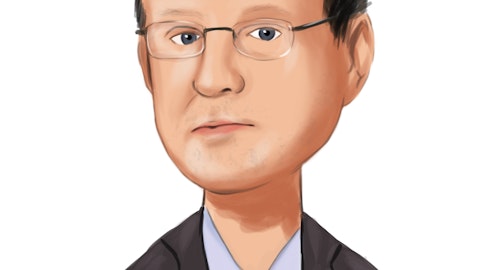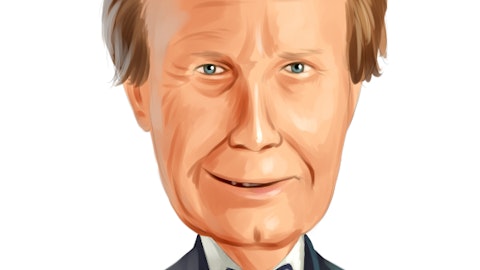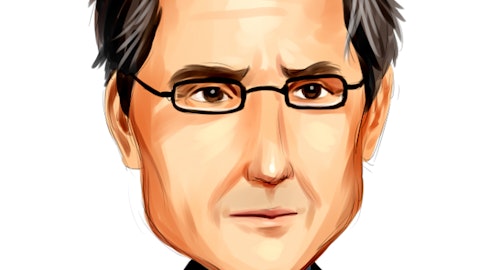Mike Archer: It was a mix of corporates and MBS, primarily, I believe, corporate.
Damon DelMonte: And then the two swap agreements, could you just go over those specifics again?
Mike Archer: So we did $200 million notional in total, it was $150 million three year, I always have to think about this, get this right, received pay fixed, receive variable. I think the pay amount on that was — the payout on that was $371 million and then we did another $50 million for a five year swap and the pay amount on that was $334 million, and both of those are receiving Fed fund OIS.
Damon DelMonte: And then I guess on the expense outlook, you said 2% to 3% from the fourth quarter into the first. Overall, do you expect 2% to 3% for the entire year or is that just like from the first quarter and then another lift after that?
Mike Archer: So that guidance was generally for the first quarter. I listed a couple of factors in there in the FDIC fees and just normal merit. So call it, I would say that’s about $27.5 million, so about half million. The one item I would just highlight is, historically, we’ve continued to manage within our efficiency ratio range of call it, 55% to 58%, and we’ll certainly do that throughout the year and that’s our expectation.
Operator: Our next question comes from the line of Matthew Breese with Stephens Inc.
Matthew Breese: Just thinking about the overall NIM forecast. Within that, I was curious where do you have demand deposits going down to in this quarter, end of the year at 24%. Pre-COVID, think it was at 16%. If you go further back, Camden was operating in kind of a 10% to 15% range pre great financial crisis. So just curious where do you think this figure goes during this tightening cycle, and what structurally keeps you around your estimates?
Mike Archer: So we’re trying to pull that number, Matt. But I would just comment that we have seen some pressure in terms of some of the bigger commercial — sophisticated commercial customers looking for interest. So we’ve seen some mix shift, if you will, from DDA over to now or interest checking. So we’ve seen some of that shift occur. I think that’s become more common. Certainly, we’re managing that internally, having the proactive conversations with our — primarily our business customers. But certainly, there is more pressure on that.
Matthew Breese: As we think about
Mike Archer: I was going to say, we can connect to offline and give you some thoughts on that, the DDA specifically.
Matthew Breese: Do you expect deposit growth in ’23? If so, what areas? And maybe you could comment on further reliance on broker deposits?
Mike Archer: So we haven’t executed. We are looking at some broker deposits, additional $90 million to $100 million we are looking at right now just to supplement funding and having it be more cost effective, particularly as we anticipate Fed funds is going to continue to move higher. So we are looking at that. We’ll likely look at a laddered CD like we just spoke about kind of stretching out over 12 months there. And I apologize, what was the first part of your question there?
Matthew Breese: What kind of deposit growth, the outlook for the year?
Mike Archer: I believe it was mid single digits from a deposit growth perspective.
Greg Dufour: And I would say, strategically, Matt, to keep in mind a couple of things is that we still have a very strong retail franchise, and that gets back into my comment of focusing on relationships. The team has done a great job. Although deposits have always been a focus of ours, as you know, through incentives, through internal promotions, external promotions, strengthening that at this time to build the relationship side. The other thing within our deposit focus is what has ramped up more over the past few years is on the treasury management side that we have, and Mike alluded to some of the big commercial depositors that we have. So that’s another lever set of tools that we have. We have a great team within that, that we are very much focused on deposit growth.
And with that said, call it, from a sales management perspective, that’s where we’re focused on. And more we can drive down that rate or stabilize that rate, it just gives us more flexibility on the lending side. With all of that said, I’ll note that in our markets, we are seeing, I think I even said hypercompetitive markets on the deposit side and the loan side. But that’s our focus and we’ll do it prudently.




